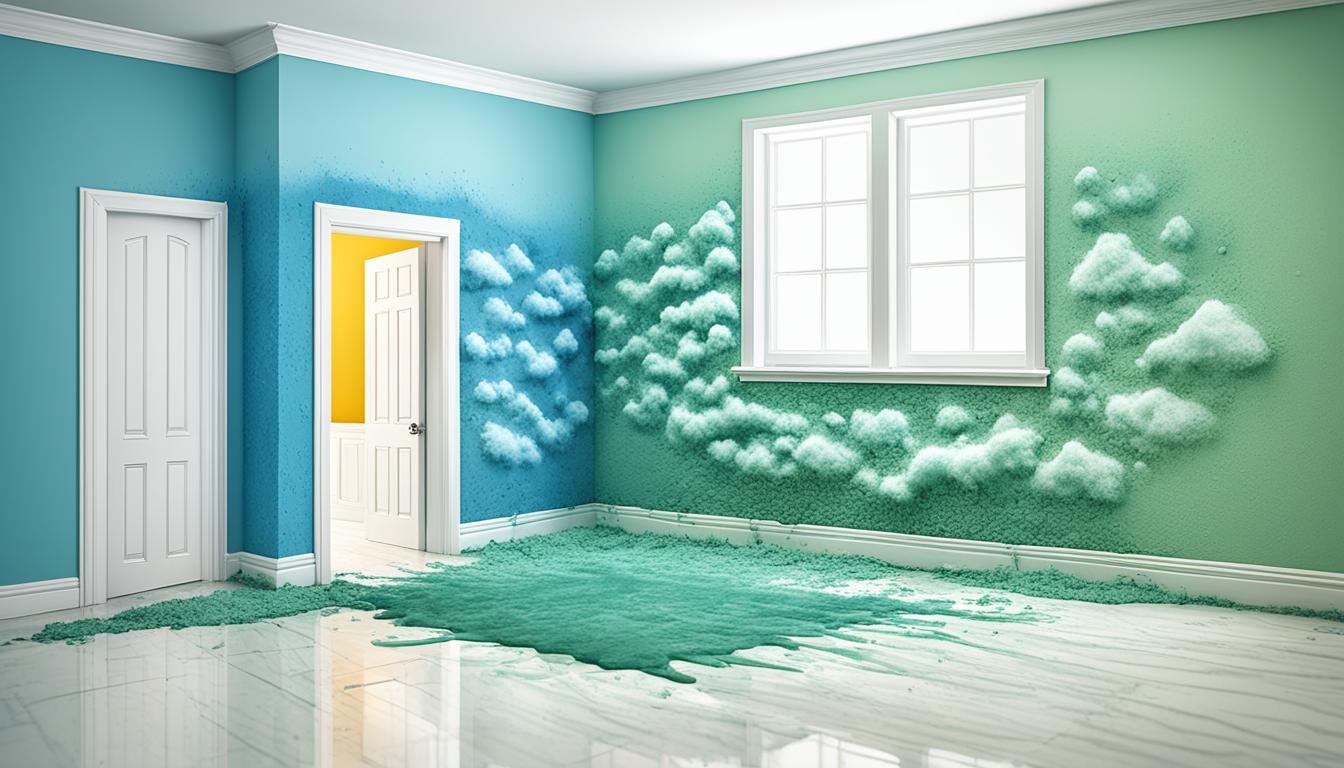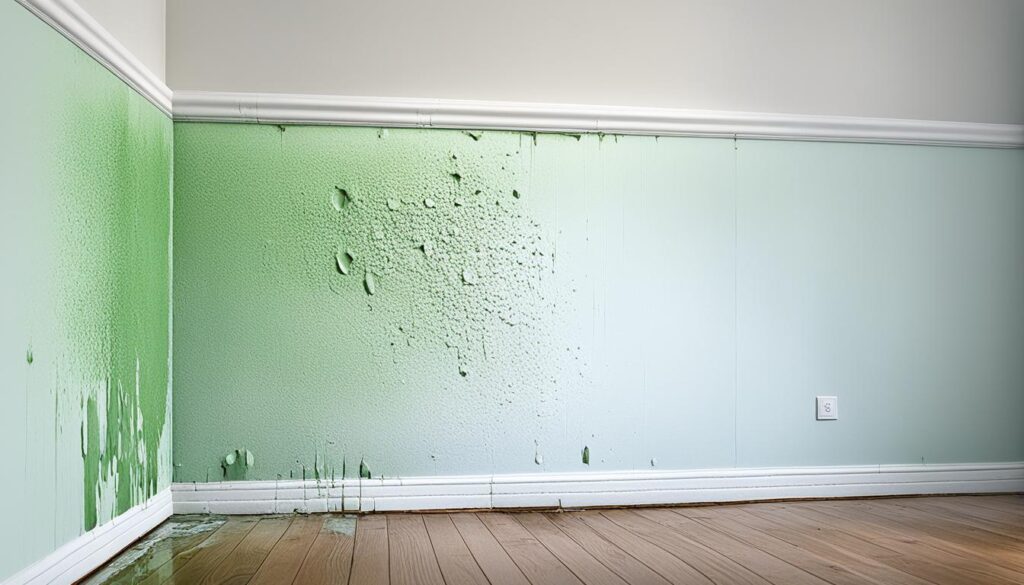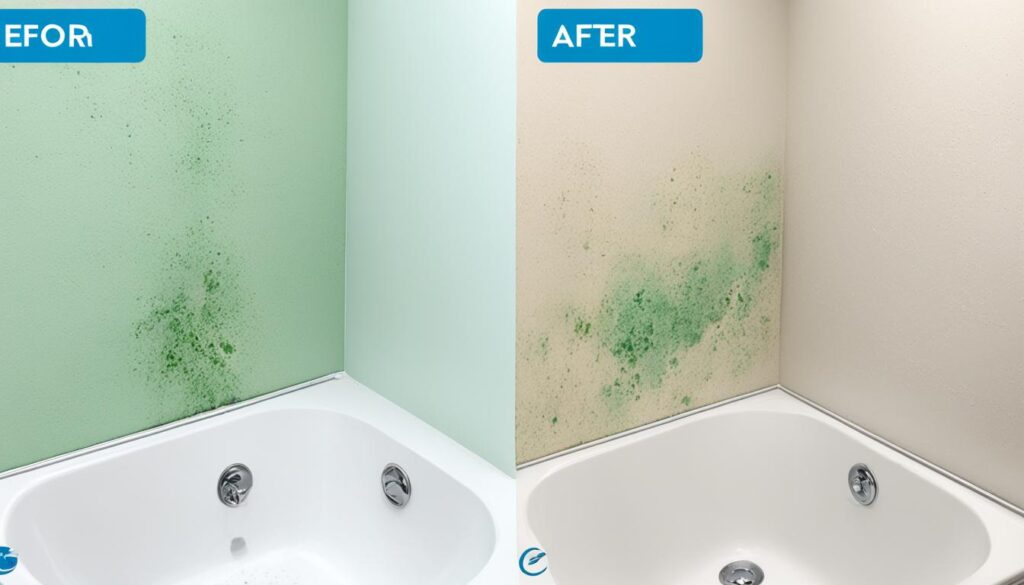
Mold and Moisture Control: Tips for a Healthy Home
Welcome to our informative guide on mold and moisture control. Maintaining a healthy home involves paying close attention to these crucial aspects. Mold prevention and moisture control are key to creating a safe living environment for you and your family. In this section, we will provide you with valuable tips and strategies to prevent mold growth and effectively control moisture levels in your home.
Excessive moisture can lead to the growth of mold, which can have detrimental effects on both your health and the structural integrity of your home. By understanding the importance of mold prevention and moisture control, you can take proactive measures to safeguard your living space.
Creating a mold-free environment requires a combination of preventative measures and strategic solutions. We will explore various approaches to identify potential indoor mold sources and address excessive dampness or moisture. Our aim is to equip you with practical knowledge and effective solutions to combat mold and create a healthier home environment.
Key Takeaways:
- Regularly inspect your home for signs of mold and address any issues promptly.
- Control moisture levels by fixing leaks, using proper ventilation, and managing humidity.
- Address water damage and dampness immediately to prevent mold growth.
- Invest in moisture-detecting devices to monitor and manage moisture levels effectively.
- Consult professionals for mold removal and remediation to ensure thorough and safe solutions.
Essential Tips for Mold Prevention and Moisture Control
In order to maintain a healthy home environment, it is crucial to prioritize mold prevention and moisture control. By addressing potential sources of indoor mold and eliminating excessive dampness, you can protect your family’s health and safeguard the structural integrity of your home. Here are some essential tips for mold prevention and moisture control:
Identify and Address Potential Sources of Indoor Mold
One of the key steps in mold prevention is identifying and addressing potential sources of indoor mold. Regularly inspect areas prone to moisture buildup, such as bathrooms, kitchens, and basements. Look for signs of mold growth, such as musty odors, discoloration on walls or ceilings, and peeling paint or wallpaper. If you spot any signs of mold, take immediate action to clean and remove it.
Tip: Use a solution of water and detergent or a commercial mold cleaner to scrub away visible mold. Remember to wear protective gear, such as gloves and a mask, to avoid exposure to mold spores.
Control Moisture Levels in Your Home
To prevent the growth of mold, it is important to control moisture levels in your home. Here are some strategies to help you achieve this:
- Ensure proper ventilation in areas prone to moisture, such as bathrooms and kitchens. Use exhaust fans or open windows to allow humid air to escape.
- Fix any plumbing leaks or water damage promptly to prevent moisture buildup.
- Use dehumidifiers to reduce excess humidity in areas with high moisture levels, such as basements.
- Avoid overwatering plants and ensure proper drainage to prevent water accumulation.
- Regularly clean and dry areas where moisture tends to accumulate, including shower curtains, window sills, and air conditioning units.
Did you know? Keeping indoor humidity levels below 50% can effectively inhibit the growth of mold.
Implement Effective Dampness Solutions
In addition to controlling moisture levels, implementing effective dampness solutions can further prevent mold growth. Here are some solutions to consider:
- Install and use exhaust fans in bathrooms, kitchens, and laundry rooms to remove excess moisture from the air.
- Use waterproof materials in areas prone to water exposure, such as bathrooms or laundry rooms. This includes using mold-resistant drywall, water-resistant flooring, and mildew-resistant caulk.
- Improve ventilation in your home by opening windows, using ceiling fans, or installing air ventilation systems.
By following these essential tips for mold prevention and moisture control, you can create a healthier living environment for you and your family. Remember to regularly inspect your home for potential mold sources, control moisture levels, and implement effective dampness solutions to keep indoor mold at bay.

Mold Removal and Remediation: Effective Solutions for Healthy Homes
In order to maintain a healthy home, it is crucial to address mold issues promptly and effectively. Mold not only poses a risk to your property, but it can also have serious health implications for you and your family. In this section, we will explore the importance of mold removal and remediation, as well as the steps involved in ensuring a mold-free environment.
When it comes to mold removal, it is essential to hire professionals who specialize in mold remediation. These experts have the knowledge, experience, and equipment needed to safely remove mold from your home. They can also identify the root cause of the mold growth and address any underlying moisture issues to prevent mold reoccurrence.
Moisture detection is a critical aspect of mold removal and remediation. Mold thrives in damp environments, so it is important to identify and eliminate sources of moisture in your home. Moisture can come from various sources such as leaking pipes, roof leaks, condensation, or high humidity levels. By addressing these issues, you can create an environment that is less prone to mold growth.
During the mold removal process, professionals will take several steps to ensure thorough remediation. This may include:
- Containing the affected area to prevent mold spores from spreading to other parts of the house.
- Removing contaminated materials such as drywall, carpeting, or insulation.
- Using specialized equipment to clean and disinfect surfaces.
- Drying the area to prevent future moisture buildup.
- Conducting post-remediation testing to ensure that all mold has been effectively removed.
It is important to note that mold removal should only be performed by trained professionals. Attempting to remove mold yourself may result in inadequate remediation and potential health risks.
By investing in professional mold removal and remediation, you can ensure the health and safety of your home. It is a proactive step towards creating a mold-free environment, preventing further damage, and promoting the well-being of your family.

Benefits of Professional Mold Removal and Remediation:
- Thorough and effective mold removal
- Identification of underlying moisture issues
- Prevention of mold reoccurrence
- Expertise in handling hazardous materials
- Promotion of a healthy living environment
Conclusion
In conclusion, effective mold and moisture control are essential for maintaining a healthy home environment. By implementing the tips and strategies mentioned in this article, you can prevent mold growth, control moisture levels, and create a safer living space for you and your loved ones.
Regular mold inspections and prompt remediation are crucial in ensuring that any mold issues are addressed as early as possible. By detecting and resolving moisture problems promptly, you can prevent the growth and spread of mold, which can cause various health issues and damage to your property.
Remember that mold removal and remediation should not be taken lightly. It is important to hire professionals who specialize in mold remediation to ensure effective and thorough removal. Additionally, addressing underlying moisture issues is essential to prevent mold reoccurrence.
In conclusion, maintaining mold and moisture control is an ongoing process that requires vigilance and proactive measures. By prioritizing regular inspections, timely remediation, and addressing any underlying moisture problems, you can create a mold-free home and promote a healthier living environment for your family.




